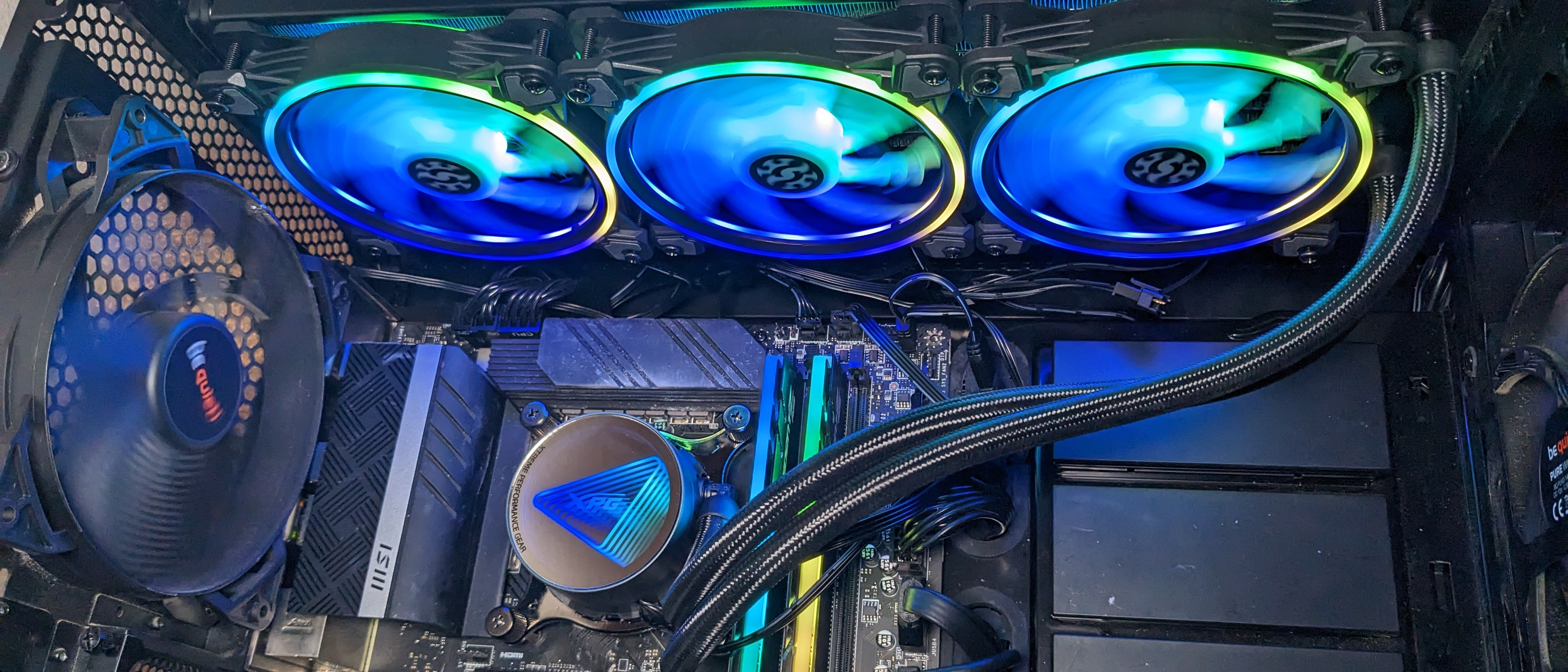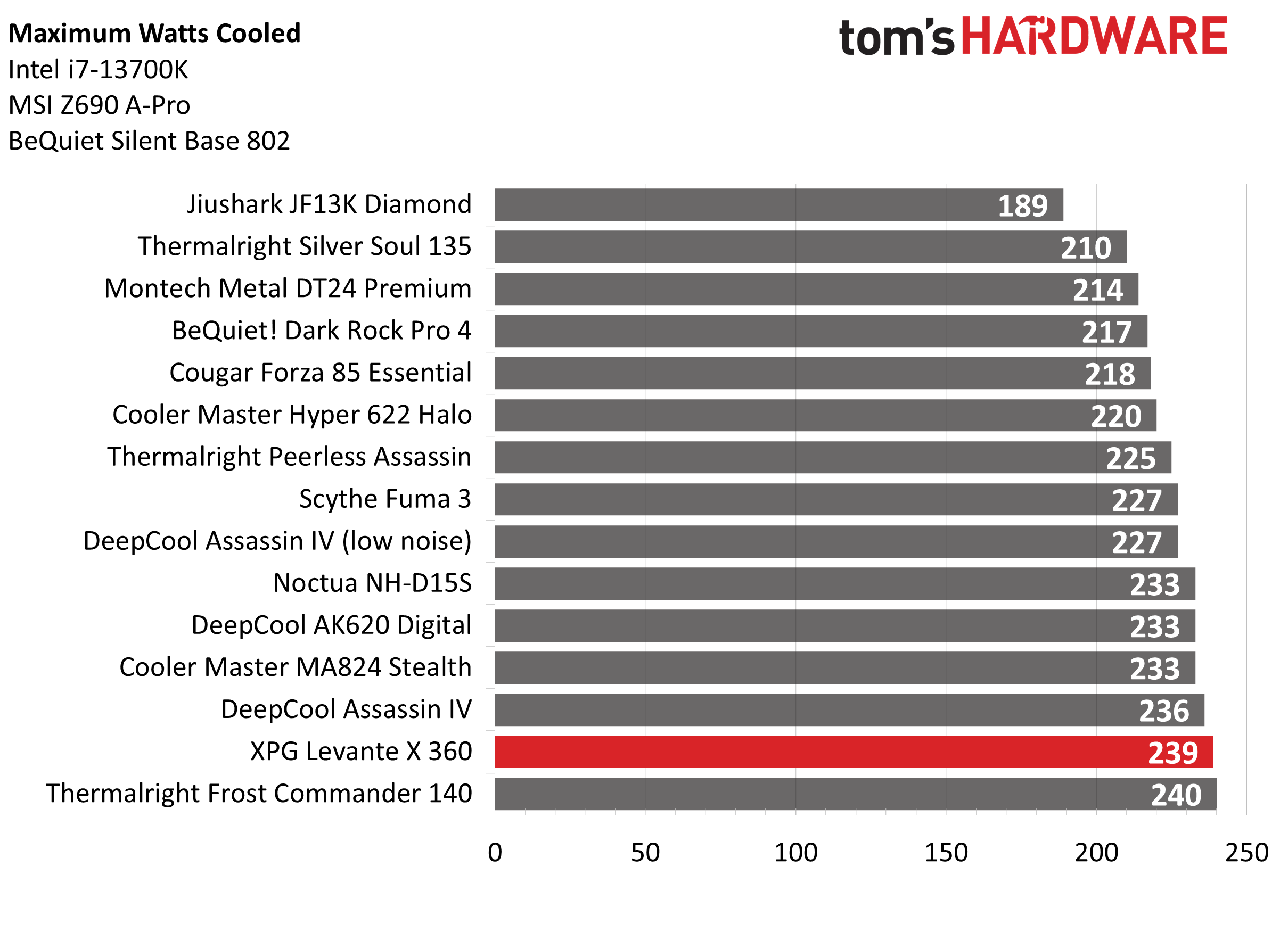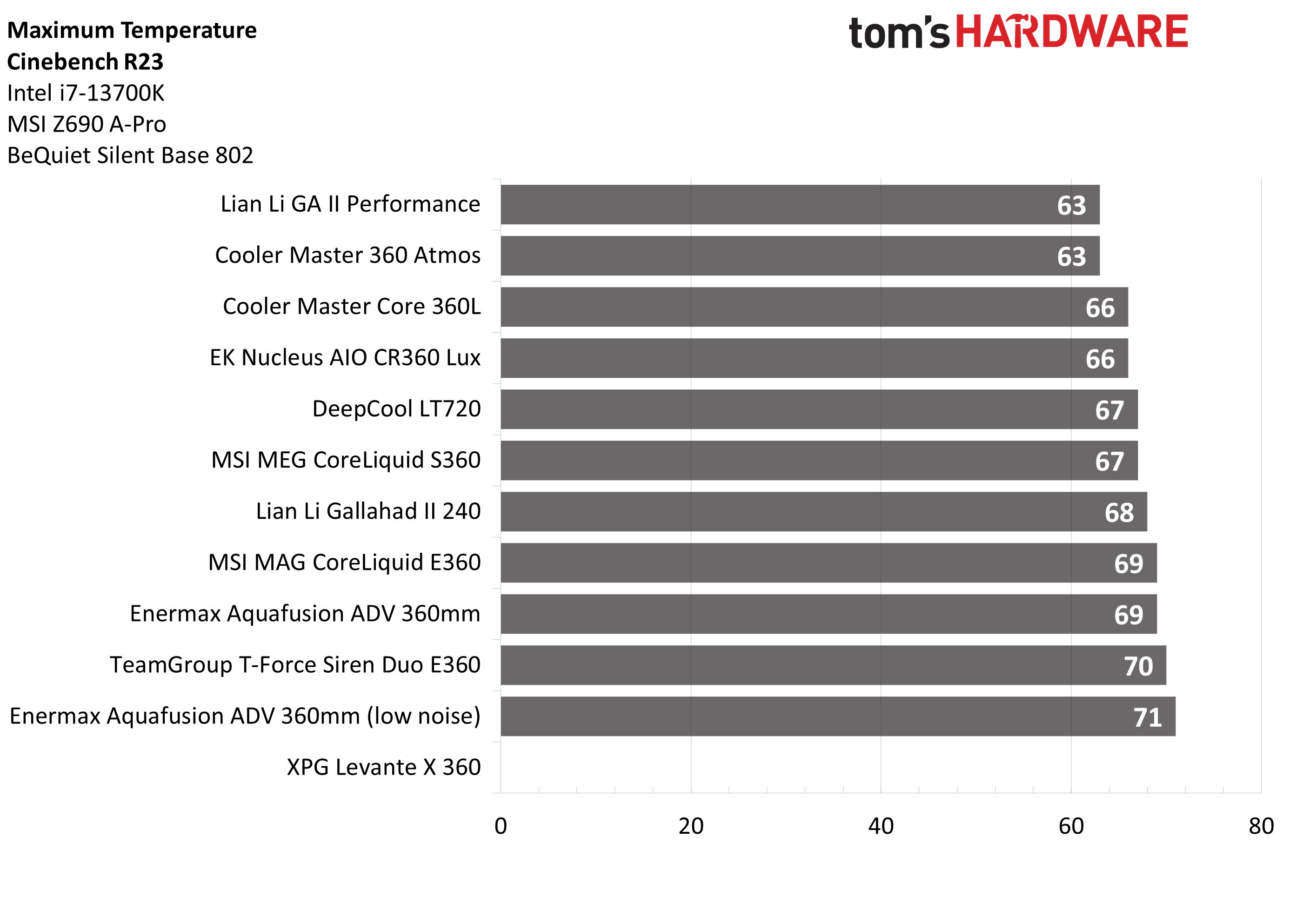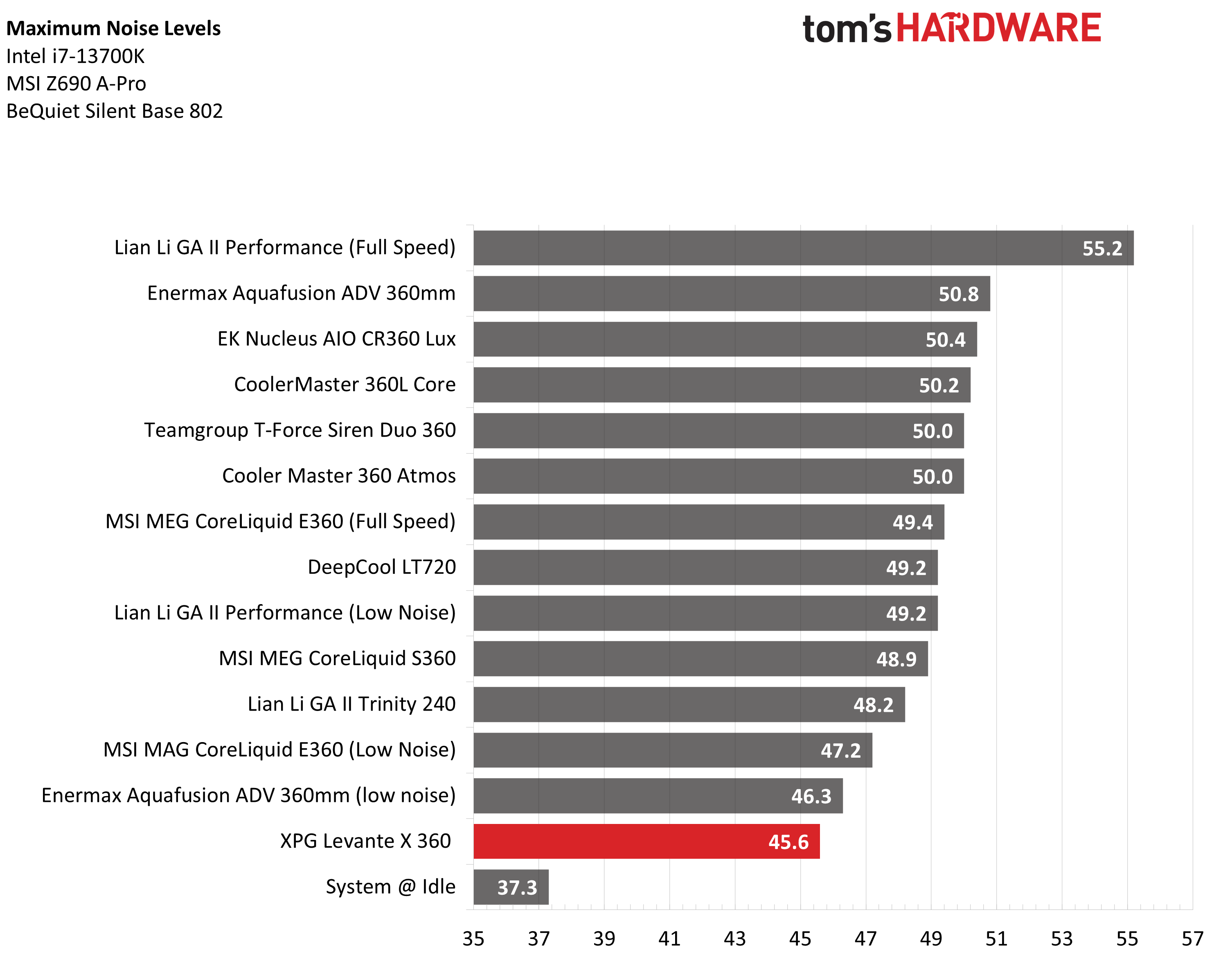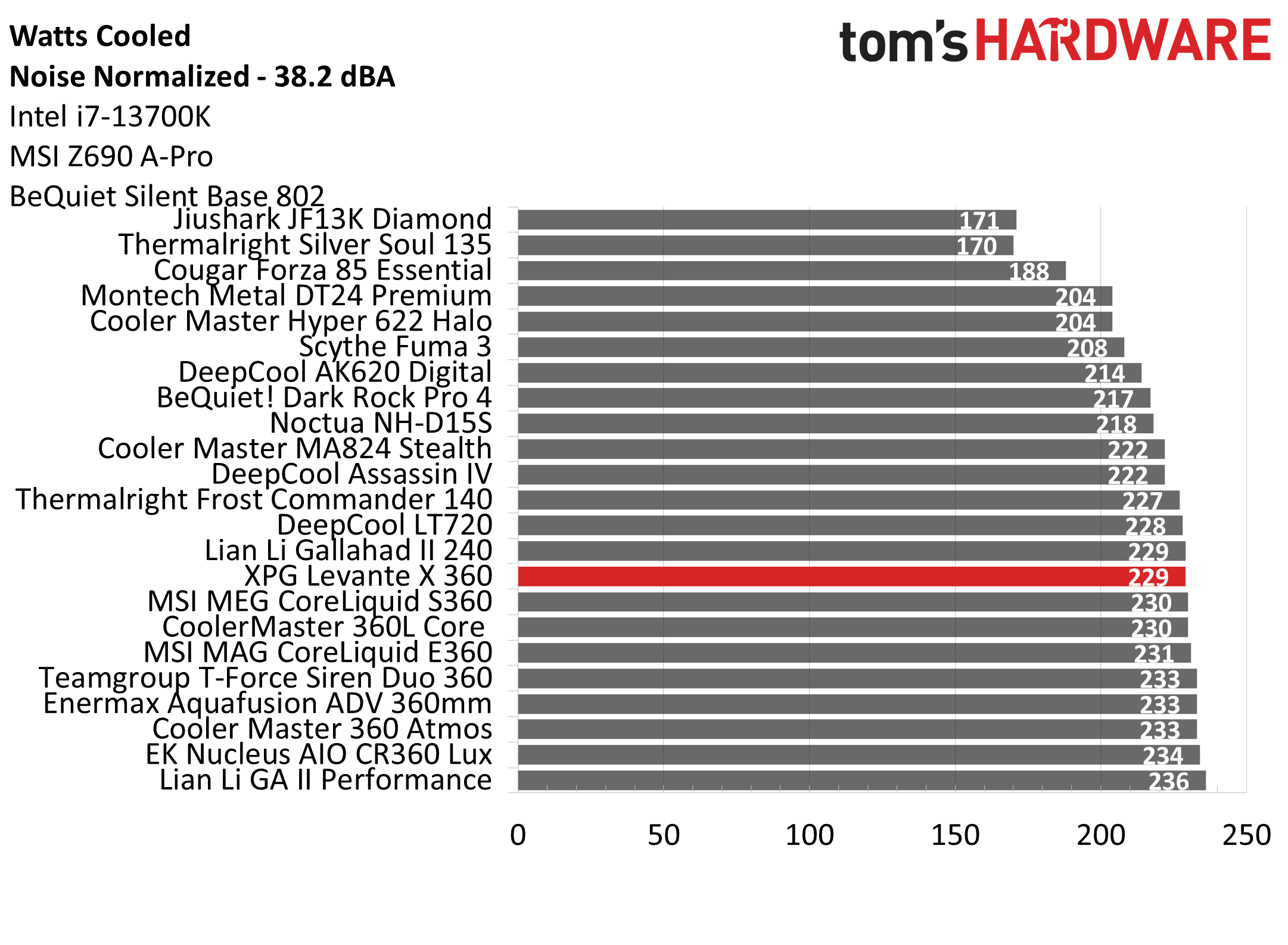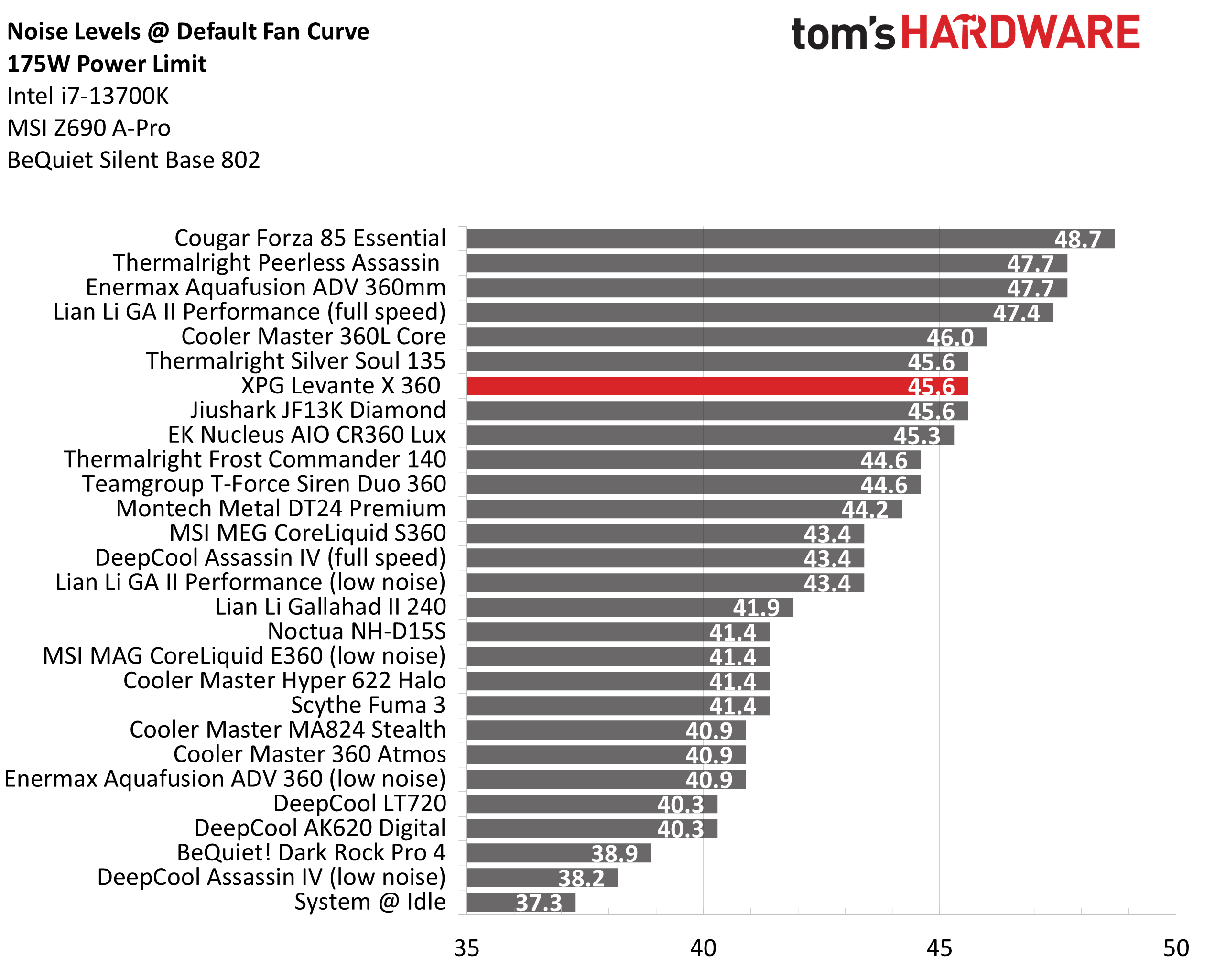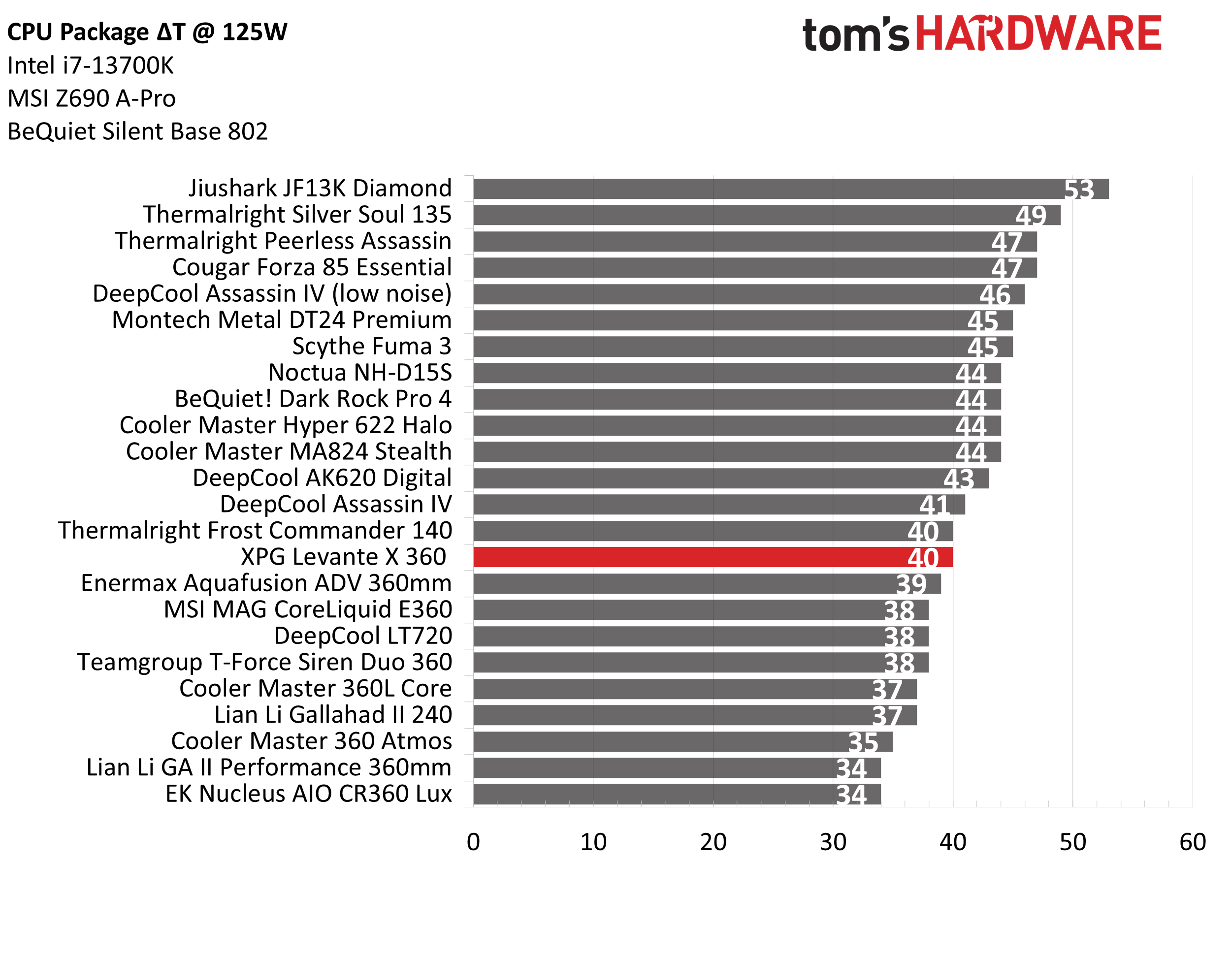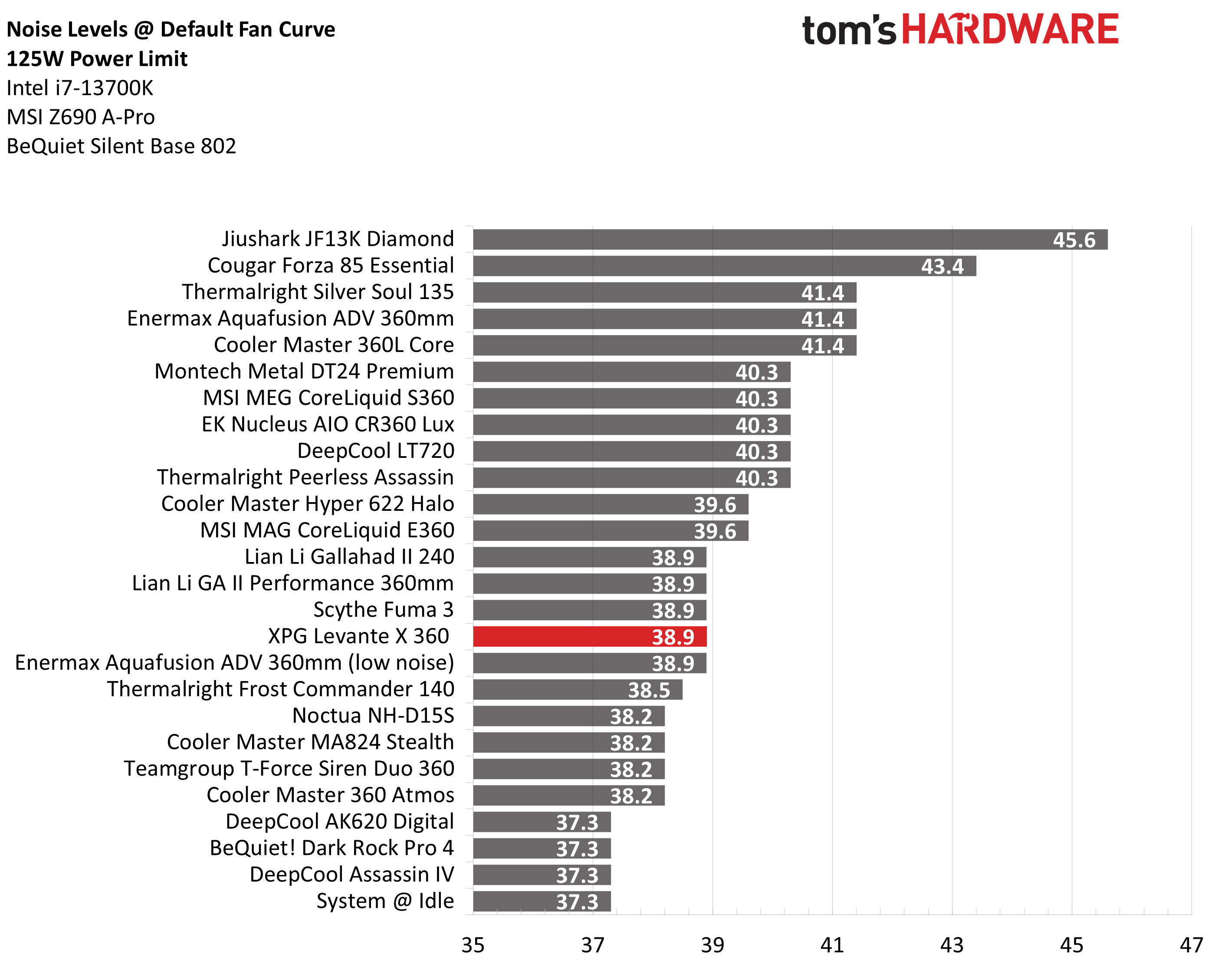Why you can trust Tom's Hardware
No Power Limits Thermal Results
Without power limits enforced on Intel’s i7-13700K, the CPU will hit its peak temperature and thermally throttle with even the strongest of air coolers. For most coolers, we’ll measure the CPU package power to determine the maximum wattage cooled.
The XPG Levante X 360 does well here in the sense that it’s able to cool 239W, almost enough to allow Intel’s i7-13700K to run fully unthrottled in the most thermally intensive scenarios. However, more modern AIOs released in the past year can handle this workload while running under the peak CPU temperature.
Normally I would consider it a mark against the AIO if it fails maximum intensity stress testing – but there’s one exception: when the cooler runs quietly. XPG’s Levante X 360 might not be capable of taming the hottest workloads, but it runs quieter than any of the AIOs I’ve tested that do. System noise levels were measured at 45.6 dBA with the Levante X 360, compared to an average of 49 dBA with the other coolers shown here.
Thermal Results with noise normalized to 38.2 dBA
Finding the right balance between fan noise levels and cooling performance is important. While running fans at full speed can improve cooling capacity to some extent, the benefits are limited and many users prefer a quiet system. With this noise-normalized test, I’ve set noise levels to 38.2 dba. This level of noise is a low, but slightly audible, volume level.
When acoustics are limited to 38.2 dBA the XP Levante X 360 cooled an average of ~229W during testing, which is on the lower end of performance for recent 360mm AIOs, but is still quite good. The best result here only offers 7W of extra cooling capacity.
175W Cinebench Results
Most coolers on the market can keep Intel’s i7-13700K under its peak temperature if the power consumption is limited, so for this test we’ll be looking at the CPU’s actual temperature. The XPG Levante X 360’s result of 53C over ambient is similar to Teamgroup’s Siren Duo 360, a few degrees cooler than most air coolers.
Noise levels are arguably more important than thermals in a 175W workload. With the Levante X 360 installed, I measured a result of 45.6 dBA, equal to the maximum noise levels. This isn’t loud per se, but it is one of the louder results I have recorded in this scenario.
Get Tom's Hardware's best news and in-depth reviews, straight to your inbox.
125W Cinebench Results
The lowest power limit I test with Raptor Lake CPUs is 125W. This is a high enough limit to allow the CPU to maintain base clocks peeds even in the most intensive tests, and most coolers should be able to keep the CPU below TJ Max – even low-end coolers.
Looking at thermal performance, the Levante X 360 kept the CPU at an average of 40C over ambient, which is just behind the competing 360mm AIOs tested here and a bit better than air coolers. Really, thermals do not matter in this scenario.
Even Intel’s basic stock cooler can handle a load like this with ease. Noise levels, rather than CPU temperature, are the most important factor here. And with a result of 38.9 dBA, the Levante X 360 tied for the second-quietest result we have measured from any AIO.
Conclusion
The Levante X 360 performs well enough, and its low noise profile will be appreciated by many. But it is impossible to recommend at anywhere close to $199, when Arctic’s Liquid Freezer 360 offers similar performance and noise levels for $70 less. But if you find this unit on a big sale, it might be worth considering.

Albert Thomas is a contributor for Tom’s Hardware, primarily covering CPU cooling reviews.
